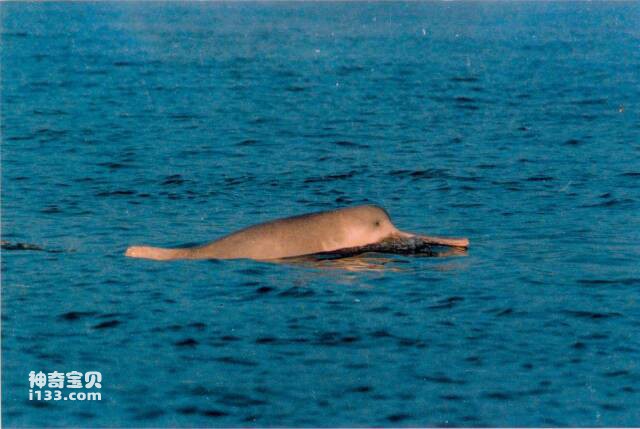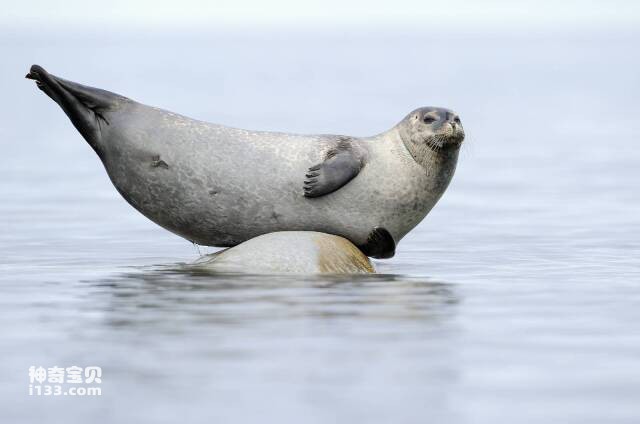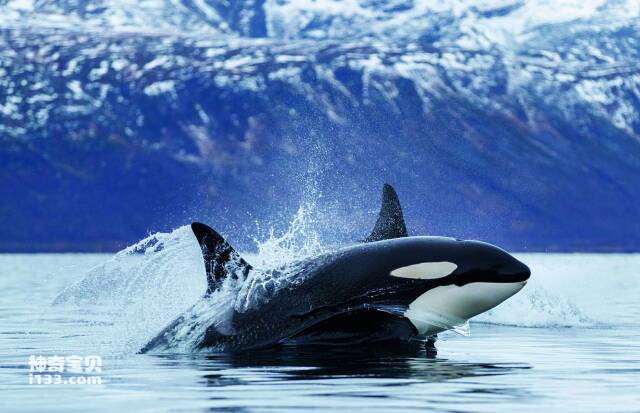About 260 million years ago, some mammals returned to the ocean again. They may be the descendants of carnivores and ungulates. Some scientists believe the prehistoric ancestors of marine mammals were otters, others believe they were bears. Regardless of their ancestors, these mammals basically adapted to life in the ocean: their bodies gradually lengthened, their feet became webbed, and they shortened into fins. However, they still retain the basic characteristics of mammals: they have hair and mammary glands, and they have a constant body temperature. Marine mammals are divided into two main categories: pinnipeds (seals, walruses, and sea lions) and cetaceans (whales and dolphins).

Baiji dolphin
Pinnipeds are the descendants of carnivores and feed on fish and sometimes cuttlefish, squid and octopus. They are not as aquatic as cetaceans and do not give birth to their young in the water. Some pinnipeds take care of their young for a very short time. The mother will leave the young three weeks after they are born, allowing them to practice swimming and hunting independently. Pinniped limbs are blade-like flippers supported by long phalanges. Pinnipeds live in groups. There are 19 species of seals, including Greenland (or Irish) seals, which mainly live in Antarctica and the Arctic with harsh climates. The elephant seal is a giant seal, 6.5 meters long and weighing 3 tons. A male seal keeps many females together as his harem. Walruses are large pinnipeds that are closely related to sea lions and have two incisors that grow into tusks. Sea lions can crawl on land on all fours faster than seals, and have different external ears than seals. In the Southern Hemisphere, sea lions are plentiful, but in the northern Pacific Ocean there are very few. During the breeding season, sea lions gather in large groups. Pinnipeds are distributed in almost every ocean, but due to large-scale hunting by humans for their skin and blubber, some species are on the verge of extinction. For example, the monk seals in the Mediterranean Sea are almost completely extinct.

seal
The white-tip dolphin belongs to the order Cetacea, a superfamily of freshwater dolphins. It is only distributed in the middle and lower reaches of the Yangtze River. It is a rare aquatic mammal unique to China. It has an evolutionary history of more than 20 million years and is known as a "living fossil". As early as 2,000 years ago, in Han Dynasty documents, the Chinese people had made quite accurate descriptions of the baiji's morphology and behavior. Over the course of history, the baiji dolphin has been endowed with various mysterious and legendary colors by the people on both sides of the Yangtze River, and has become the goddess of the Yangtze River in people's minds.

whale
Cetaceans are a group of prehistoric hoofed animals that later returned to the ocean, but now they can no longer live on land. They mate, reproduce, and care for their young in the water. Among cetaceans, there is the blue whale, the largest animal in the world. An adult blue whale is 35 meters long and weighs 150 tons. All whales have a cone-shaped body with a horizontal caudal fin (tail) at the end. The hind legs have completely degenerated, the front legs have evolved into fins, the nostrils are on the top of the head, and the exhaust gases in the body are discharged through openings called blowholes. Cetaceans can dive to depths of hundreds of meters and hold their breath for up to an hour. Some whales can emit ultrasonic waves to communicate with each other and detect prey. Cetaceans can be divided into two main groups: baleen whales and toothed whales. The suborder of baleen whales includes humpback whales and warm whales. They have no teeth, but have horny gums, or baleen, which are used to filter seawater and screen out fish and shrimp. The suborder of toothed whales includes Delphinidae (including killer whales), Hook-billed whales and sperm whales both have dozens of the same conical teeth, which are used to hunt squid and other fish. They live in all oceans, and some species live in freshwater. There are more than 40 species of dolphins in the family, which like to live in groups and communicate with each other using language. Scientists are working hard to decipher these languages. Dolphins are social animals and will help their injured or sick companions. Sperm whales can dive to a depth of 1,000 meters to catch large squid. The digested residue gradually accumulates in the stomach, forming ambergris, which is widely used in the perfume industry.
animal tags:
We created this article in conjunction with AI technology, then made sure it was fact-checked and edited by a Animals Top editor.